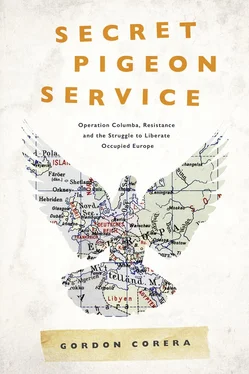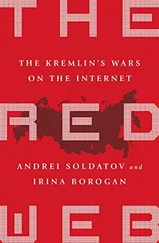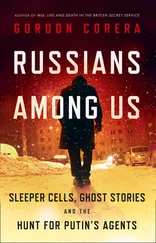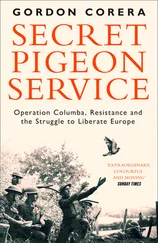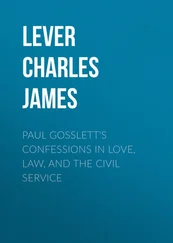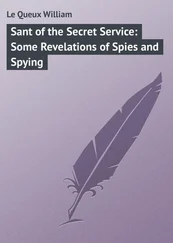Perhaps there was some clue in the National Archives in Kew which could unlock this pigeon’s secrets? I spent a morning pulling up any and every file that looked as if it might relate to pigeon messages in the Second World War. There were more than I thought, and it was a bewildering induction into a world I had never even known existed. But amidst the interminable accounts of which department should pay for pigeon feed, or what rank of personnel were required for a particular RAF loft, one file that landed on my desk immediately stood out.
Apart from the dates, the front cover bore only two words. One was ‘Secret’; the other, in elegant handwriting, was ‘Columba’. At the top was a photo of a pigeon someone had cut out. Just below the pigeon was a cartoon – also cut out, this time from a newspaper – of Hitler lying prostrate on the floor. This gave the impression that the pigeon had done on the Führer what pigeons do, leading him to fall over. At the bottom of the cover was another cartoon, this one of an RAF plane flown by Winston Churchill with a familiar cigar in his mouth and his fingers held up in his ‘V for Victory’ sign. The file clearly contained details of a secret operation. But it looked utterly unlike any I had seen before. What kind of people would, in the midst of war, encase the contents of their clandestine work in such colourful – even playful – packaging?
Loosening the ribbon that bound the file, I uncovered riches inside. The file had nothing to do with the secret message found in the chimney. But it was far more interesting. The riches came in the form of tiny pink slips of paper. These were messages from ordinary people living under Nazi rule in occupied Europe that had been brought back by pigeon. They were filled with the day-to-day realities of wartime and offered a remarkable insight into the small frustrations and dark tragedies of life under occupation. And then I came across message number thirty-seven. It was unlike everything else. All the other messages had been written up into formal notes, but in this case a copy of the original message had been included in the archive, clearly because it was something special. It looked more like a work of art than an official document. There was tiny, beautiful inky writing, too small to read with the naked eye and densely packed into an unimaginably small space. A swirling symbol as a signature. And maps, detailed colourful maps. Most of the other messages produced intelligence reports that were half a page or perhaps a page long. Message 37 – rolled up tightly into the size of a postage stamp so it could fit into a cylinder attached to a pigeon’s leg – produced an astonishing twelve pages of raw intelligence. And it had clearly had a profound impact on the team running Columba. The intelligence must have left an impression on everyone who saw it – and many did as it was passed around the highest levels of government, many referring to it in almost reverential terms.
But there was a mystery. Who had written it? And what had happened to them? The files had no answer. There was only a codename – Leopold Vindictive – on the message. Other documents contained confusing references to attempts to contact the writer after the message had been received. In none of them could I find a name. Nor was there any reference to the author in the history books I consulted. I knew I had to find out. The quest became something of an obsession. Who or what was Leopold Vindictive? And what was his – or her – fate?
Three years after first opening that file, I found my answer in Belgium. The answers lay partly with the families of those who had been members of Leopold Vindictive and who had preserved their story. In one house in a small town, a family opened up a metal keepsake box. Inside was a treasure trove of photos, maps and – most startlingly – the raw intelligence that had been collected to send back to Britain. Some of it had formed the basis for my message 37, but even more surprisingly, there was much more that had never made it over the Channel. Alongside those artefacts, I found a human story more dramatic and more powerful than I imagined. It is a story which has not been told before and which has had to be pieced together from personal accounts and archives in Britain and Belgium. It is the story that forms the centrepiece of this book, around which the wider story of the operation called Columba is told.
The pigeon is not the most obvious subject for someone interested in intelligence to write about. It is fair to say that the birds had not exactly stirred my interest before. Pigeons have a bad name. Quite literally, since if we preferred to call them by their proper name – doves, or to be more precise rock doves (or, most formally, Columba livia ) – they might be seen in a less negative light. Our perception of the pigeon is coloured by the times as children we have chased them or as adults have evaded their droppings. But our experience of ‘feral’ pigeons has obscured from us the truth that some pigeons are a form of superhero. Imagine being blindfolded and then taken hundreds of miles from home – perhaps even to another country across the sea. And then suddenly having the blindfold removed and, despite not having the slightest idea where you are, racing home at top speed. Even if home is six hundred miles away. That is not normal. Just like the super-powers of comic-book heroes, the homing instinct of pigeons is something that scientists cannot explain. They have tried over the years, with theories about magnetic fields and the sun, but no one has satisfactorily managed it.
It is a strangely comfy super-power though. The pigeon is not on a mission to save the world. It just wants to go home. From the age of six weeks, pigeons can be taught to ‘home’ to the loft from which they make their first flight, because they understand that is where they will find food, water and company. Pigeons can be picky in their journey – they do not like to fly at night or to cross water, often flying along the coast to find the shortest point at which to cross a body like the English Channel. But they are ultimately single-minded in simply wanting to get back to where they belong. Amidst the horrors of wartime, this longing has a particular resonance.
Over the course of human history, this super-power has been recognized by people who have learnt to employ it for communication by releasing pigeons to send messages home. Noah released a dove from the Ark to bring back reports of whether the flood waters had receded. In Ancient Greece, the names of winners in the original Olympic Games were sent to distant towns by pigeon. Julius Caesar used birds during the conquest of Gaul (the Romans had, at various times, a fad for breeding pigeons, but that seems largely to have been in order to eat them). The Sultan of Baghdad used a pigeon post around 1150. In the nineteenth century, Julius Reuter began a news service using pigeons to send messages between Brussels and Germany. In Paris, pigeons were the only form of contact with the outside world during its siege in 1870. A manned hot-air balloon flew out of the city under fire carrying pigeons. Friends and family (including those in Britain) could post their letters to the city of Tours, where they would be photographed and then reduced to the point where one of the pigeons could be loaded with a film containing 2,500 messages before it flew home to Paris. A magic lantern would project the messages onto a screen so they could be copied out and sent to the recipients.
The modern sport of pigeon racing began at the start of the nineteenth century in Belgium. Clubs were formed as pigeons were carefully selected and bred to improve their abilities. The breeding extended their range from 40 miles to 200 miles and then upwards to 600 miles or more. The peak popularity of the sport came in the years before and after the Second World War; at least a quarter of a million Belgians were involved, and one in nine families had a pigeon. Lofts were present in almost every small town and village in northern France and the Low Countries, across much of Britain and in the United States.
Читать дальше
